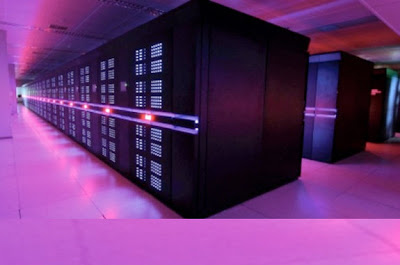Incredible Technology: How Supercomputers Solve Giant Problems
Today's supercomputers are marvels of computational power, and they are being used to tackle some of the world's biggest scientific problems.
Current models are tens of thousands of times faster than the average desktop computer. They achieve these lightning-fast speeds via parallel processing, in which many computer processors perform computations simultaneously. Supercomputers are used for everything from forecasting weather to modeling the human brain.
What sets supercomputers apart is the size and difficulty of the tasks they can tackle and solve, said Jack Wells, director of science at the Oak Ridge Leadership Computing Facility at Oak Ridge National Laboratory in Tennessee. [9 Super-Cool Uses for Supercomputers]
"Supercomputers can do supersize problems," Wells said.
Supercomputers are often built from the same components as regular computers, but they're integrated so they can work together, Wells told LiveScience.
The first supercomputers were developed in the 1960s, designed by electrical engineer Seymour Cray of Control Data Corporation (CDC). In 1964, the company released the CDC 6600, often considered to be the world's first supercomputer. Cray later formed his own company, which made the Cray-1 in 1976 and Cray-2 in 1985.
These early supercomputers had only a few processors, but by the 1990s, the United States and Japan were making ones with thousands of processors. Fujitsu's Numerical Wind Tunnel became the fastest supercomputer in 1994 with 166 processors, followed by the Hitachi SR2201, in 1996, with more than 2,000 processors. The Intel Paragon edged into the lead in 1993. As of June 2013, China's Tianhe-2 was the world's fastest supercomputer.
These early supercomputers had only a few processors, but by the 1990s, the United States and Japan were making ones with thousands of processors. Fujitsu's Numerical Wind Tunnel became the fastest supercomputer in 1994 with 166 processors, followed by the Hitachi SR2201, in 1996, with more than 2,000 processors. The Intel Paragon edged into the lead in 1993. As of June 2013, China's Tianhe-2 was the world's fastest supercomputer.
Supercomputer performance is measured in "flops," short for floating-point operations per second. Today's machines can achieve speeds in petaflops — quadrillions of flops.
The TOP500 is a ranking of the world's 500 most powerful supercomputers. China’s Tianhe-2 achieves 33.86 petaflops, while the Cray Titan reaches 17.59 petaflops, and IBM's Sequoia ranks third at 17.17 petaflops.
.jpeg)









0 comments:
Post a Comment